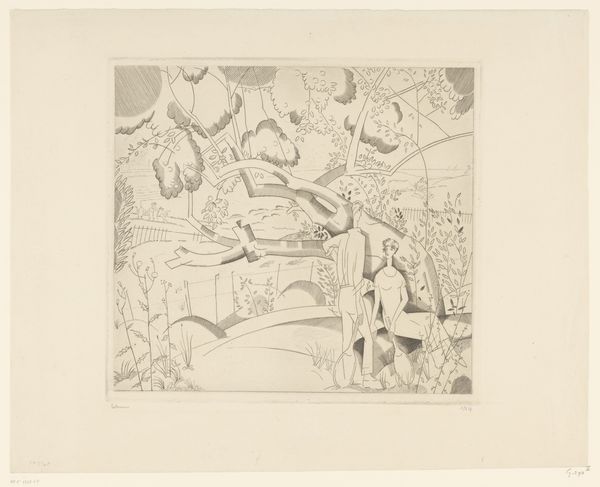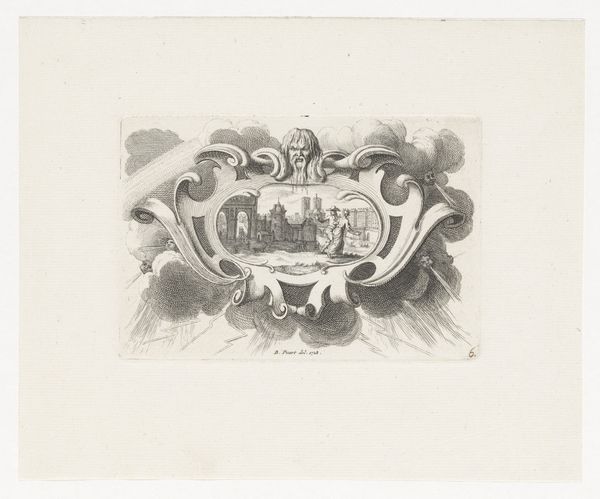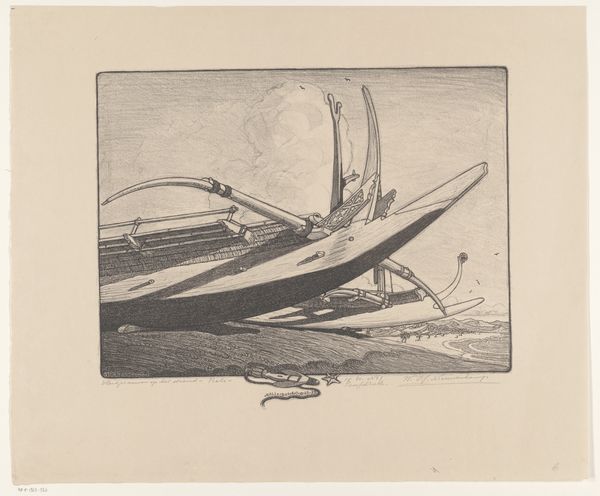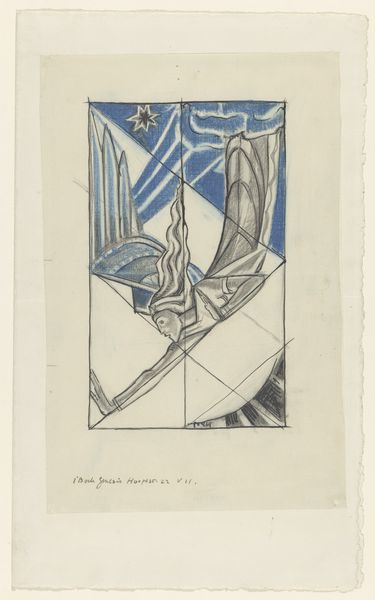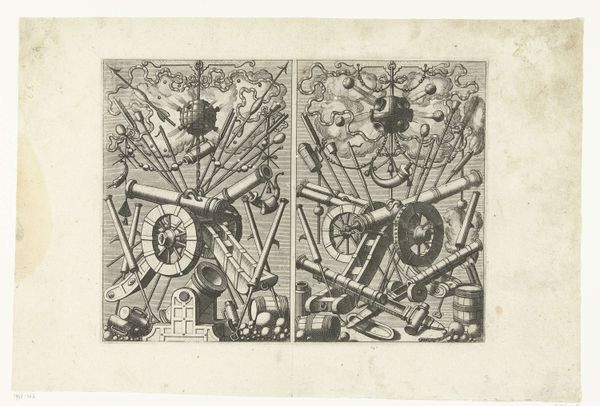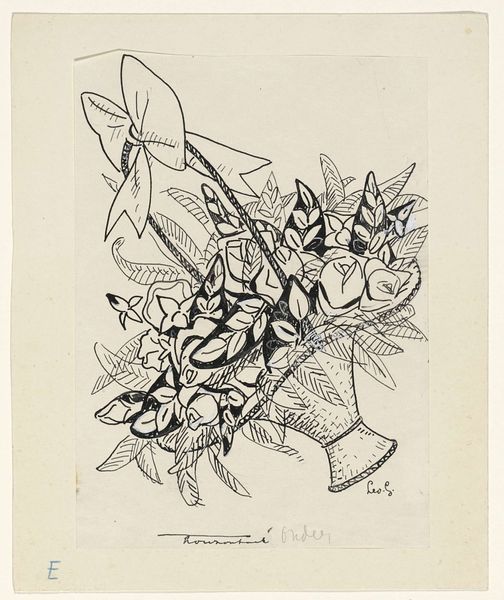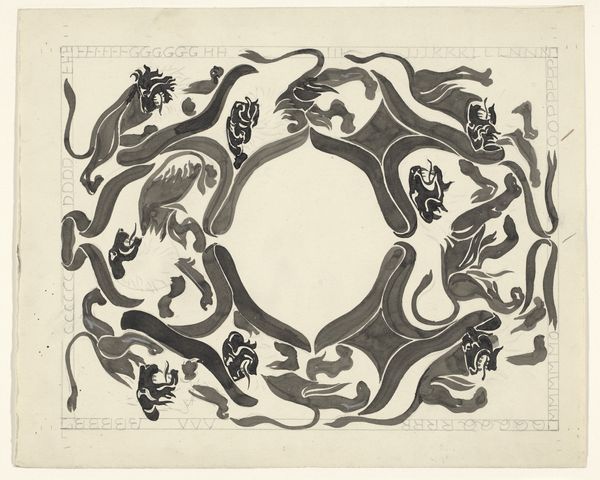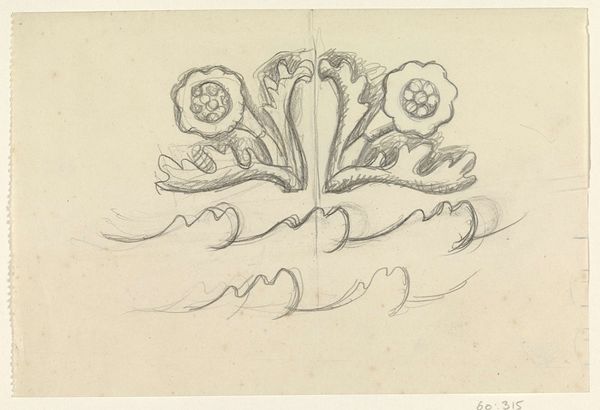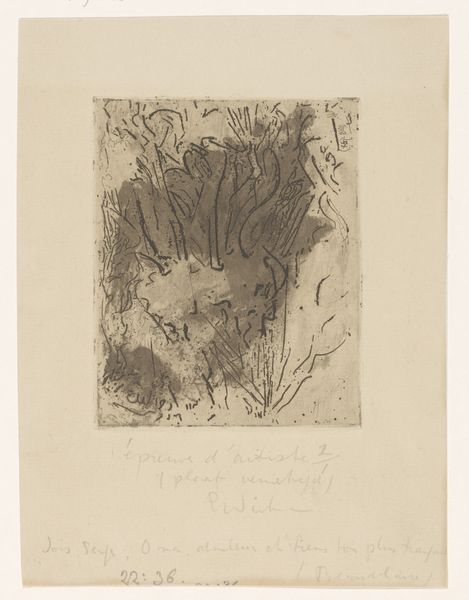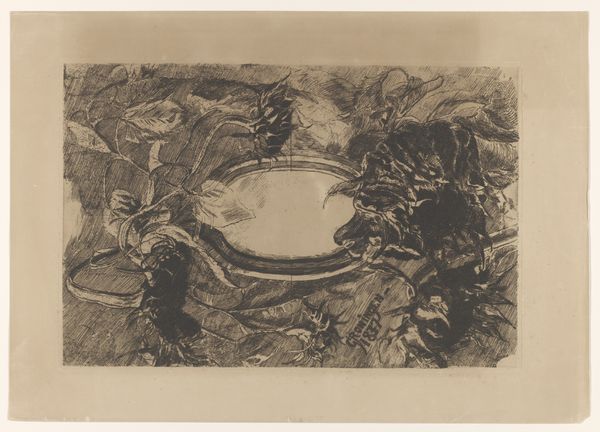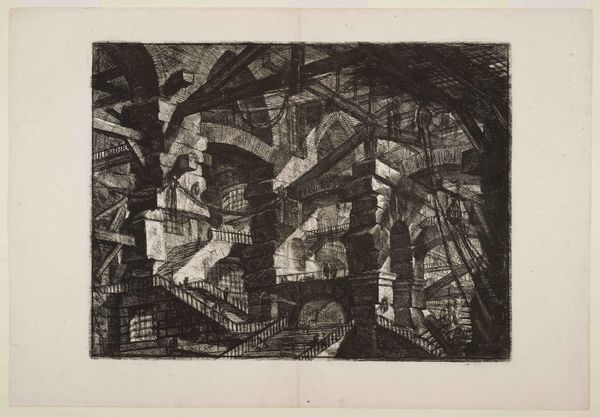
drawing, ink, pen
drawing
art-nouveau
childish illustration
pen sketch
old engraving style
cartoon sketch
figuration
personal sketchbook
ink
ink drawing experimentation
geometric
pen-ink sketch
line
symbolism
sketchbook drawing
pen
sketchbook art
doodle art
Dimensions: height 183 mm, width 268 mm
Copyright: Rijks Museum: Open Domain
Curator: Here we have "Zeven Gekroonde Muizenkoppen," or "Seven Crowned Mouse Heads," a pen and ink drawing by Willem Wenckebach from 1898. It's currently held in the Rijksmuseum. Editor: It strikes me as quite whimsical, almost absurd. The crowned mice arranged in this symmetrical, fountain-like composition, against the stark black and white background...there’s something almost unsettling about its playful nature. Curator: The use of anthropomorphic animals during the Art Nouveau period was often allegorical, perhaps offering a critique of social hierarchy or satirizing authority through these unexpected figures. What do you make of its formal properties in light of its symbolism? Editor: Well, I find the strong, confident line work captivating. It gives a real sense of depth and structure, even within this bizarre scene. The geometric underpinnings provide an almost architectural framework for the seemingly random arrangement of mice, balancing the fantastical with calculated design. Curator: Indeed. Wenckebach, working within the late 19th-century Netherlands, was likely engaging with broader European trends of Symbolism and emerging Jugendstil aesthetics, and this piece certainly demonstrates an integration of those elements into something quite unique. One can speculate that the mouse, a typically humble creature, when adorned with crowns, becomes an emblem of societal anxieties regarding class and power. Editor: Precisely, the tension created between the mundane mouse and regal crown allows for layers of interpretation. Consider the restricted palette; its monochromatic austerity actually amplifies the dramatic effect of the radial lines and how they draw the eye toward the crowned subjects. This isn’t mere decoration; it is a carefully constructed composition making effective use of restraint. Curator: Yes, and understanding Wenckebach’s involvement in various artistic circles, particularly his engagements with debates on public art and national identity, enriches our understanding of this seemingly peculiar drawing. These crowned mice, though humorous on the surface, perhaps serve as a comment on Dutch society itself, hinting at broader themes of national character, leadership, and the subtle power dynamics at play within social classes. Editor: Fascinating! Analyzing it purely from a visual standpoint reveals just how effective Wenckebach's technique is, layering line, shape, and symbolism to invite many interpretations, a rich blend of technique and message. Curator: Precisely. It speaks to the layered richness one often discovers in historical works when delving beneath the immediate impression. Editor: A delightful and slightly unnerving piece—making the viewer question what is truly dignified and what merely appears to be so.
Comments
No comments
Be the first to comment and join the conversation on the ultimate creative platform.
